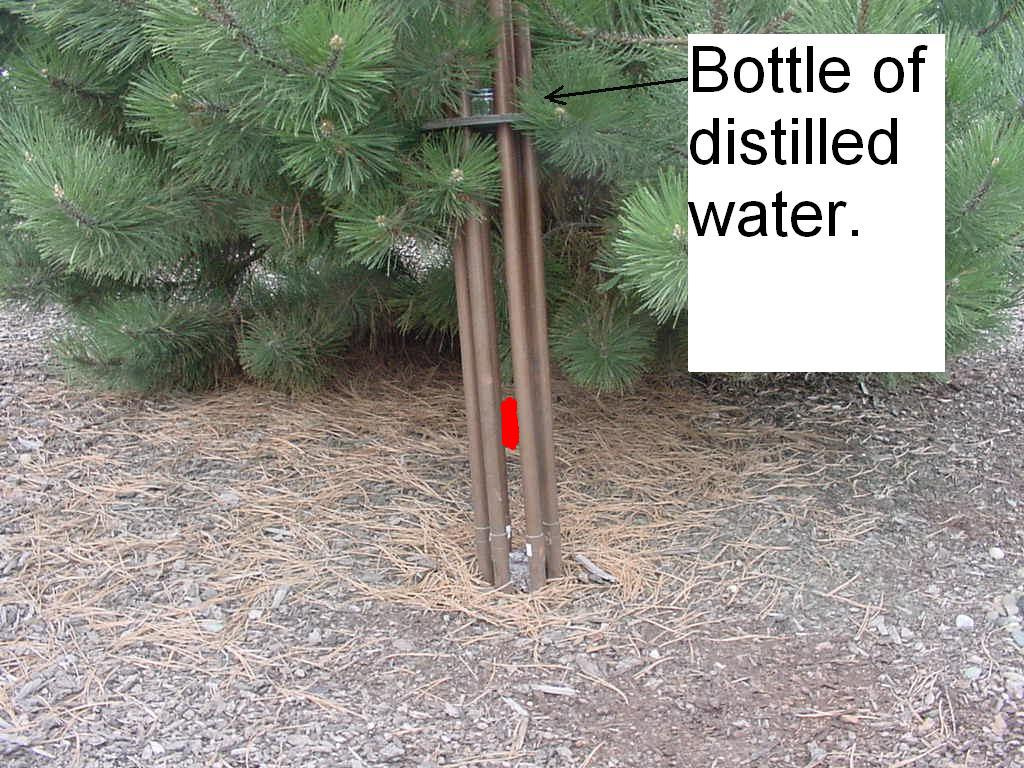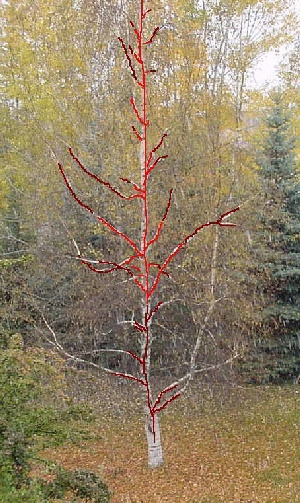Some quotes from Laozu regarding orgone and orgonite, archived at whale.to
Charging water/crystals using a CB
Put crystals in some clean water in a glass jar. Then take the center pipe temporarily out of your CB and place the jar on the stabilizer over the center hole. Leave them there for about three hours or more, and then remove them before you pour your TBs. But only take the crystals out of the water just before your pour the TBs, because the crystals begin losings their extra power as soon as they come out of the water.
Positive orgone movement as a result of cloudbuster deployment
During the first four months or so of his first CB, Laozu published a log of its effects. One of the effects of the CB that emerged was that an area of positive qi, roughly in the shape of a disc centered about the CB, gradually increased in radius (although in a rather zigzag fashion), until an area nearly a hundred feet in radius of ground about the CB was almost always positive.
Nearby the CB were planted a line of fir trees, and several TBs were placed on the ground next to some of them. At some point qi began entering into those trees from the ground up, and it eventually reached the tips of the firs. By the end of the period the firs were penetrated by the POR nearly all the time
During the next month and a half Laozu tried to visit the other latent vortices he could find within about a fifty mile radius. On October 12, while driving to work to Idaho again, his eye happened to catch on the top of a pine tree along the side of the road. He noticed that positive qi seemed to be in the tip. Looking at other trees he discoved that this was not an isolated phenomenon, that each living tree had some positive qi in its upper part, from just inches up to more than a foot. By the 17th, the qi was about 1/3 of the way down the trunk from the top; by the 26th about 1/2 of the way down and by the 31st about 70% of the way down. On the 31st Laozu took the following photograph of a birch tree (as seen further above in this thread):
the red shows the penetration of the qi on that day. The brown shows the penetration of the qi on November 5th.
Observations thus far seem to indicate the following inferences:
That after a sufficient number of vortices are healed and/or a sufficent number of CBs and other orgonite devices assembled in a particular area, POR will form a canopy high overhead;
This canopy may spread gradually, as more vortices are opened about its perimeter;
If a “river” of POR is opened, the canopy tends to extend towards that “river”, often quite a considerable distance;
Under the canopy, positive qi will descend into the tress, pass into the vertical tips, thence through the trunks into the ground.
This last process is reminiscent of the water cycle: from ocean into the sky, down again in rain, and eventually back into the ocean through streams and rivers.
Non-Material Beings - devas, sylphs, undines, salamanders and other elementals
Non-material beings or entities can be characterized by their qi. In fact I only became aware that such things really existed back in 1983 in Taiwan, when I first felt the qi of one of them in a Buddhist temple, and investigated more closely.
Examples of non-material beings are angels, those which have responsibility for seeing to the welfare of certain geographic locations (spiritus loci) or (tu di shen) [as they are called in China]), those which have responsibility for looking after trees (devas), those whose responsibilities lie in the air (sylphs), those whose responsibilities lie in the water (undines), those who are associate with fire (salamanders) and the elementals which often have responsibility for specific plant (or other) organisms.
The qi of the nymphs, sylphs, and devas which I have observed has always been quite positive. There are some beings whose presence is such that one innately is led to show them great respect: the qi of these entities is extremely positive, and it is to this group that what are often termed angels belong.
Sylphs will sometimes clothe themselves in wispy clouds, making their outlines visible to the physical eye. But not all such wispy clouds contain sylphs.
Non-material beings can be classified as to the feeling of their qi. Those characterized by positive qi, I will refer to here as sheng beings, and those by negative qi by sha beings.
Though I have not given names to any particular classes of sha beings, such things do exist, and seem to be quite as numerous as sheng beings.
Keep it simple when making cloudbusters
The ONLY coils I use with my CBs are “little secret coils” a la Cesco. When making your first CB, if you don’t have these, and you probably don’t for they are hard to get and even harder to make, I recommend using no coils. As Spade says, SIMPLICITY is the word here. Many more CBs have been made worse by adding extras by beginners than have been made better.
Resin or not in pipes? If you put no resin in the pipes, and insert the crystals at the bottom of the short pipes with a section of hose or something similar for filler, the crystals can be taken out later if they need or are desired to be changed.
Putting resin in the the pipes around the crystals is not good, unless you can put shavings or BBs around the crystals. If there is room for the metal, I usually do it this way, pouring metal and resin to the top of the crystal. I live in a cold climate, and this prevents the water from getting around the crystal and freezing in the winter. But this is just personal preference.
DTs are best here, but if you cannot find DTs, STs will work. If you use STs however, make sure the negative end of the STs is down. This is the rough, non-terminated end of the ST.
I haven’t used glue Karen, but my instinct is not to use it. There are different kinds of glue, and the odds seem pretty high that there would be some ingredient in it that would weaken the working. Of course this is just a guess.
Advice for orgonite device construction
I’ve been working with and observing this stuff for about three and a half years now. My findings and opinions are not all mainstream, but I have based them solely on personal observation.
- It is quite possible to construct orgonite devices which have negative effects on qi lines in the ground and high level entities in the neighborhood.
- When a negative orgonite device is created or obtained, it is better to take a sledge hammer to it and dispose of the small pieces than simply throw the offensive device into a landfill. If it has copper pipe in it, it is OK to reclaim the pipe and reuse it.
- Most of the negative pieces come as a result of being too fancy in the construction. Leaving the state of mind of the builder aside, I will list some purely physical problems in the construction:
- Each piece of crystal has its own field, and placing several crystals close together can effect a negative interaction of those fields.
- Interactions between quartz crystals and magnets can be quite tricky. I have seen a case where addition of neomagnets in the ground next to a (good in itself) orgonite device has caused a line of qi on which the device was laid to turn negative.
- Coils wrapped about crystals in orgonite devices are more likely to make the devices negative than positive, unless the maker has a well-developed energy sense. Just moving a coil a few millimeters can change the effect enormously.
- Adding various stones can make things worse, unless the maker is talented and knows what she is doing.
- Adding metal other than shavings can have a negative influence.
- Plastic in the ingredients or enclosing the product can be negative, though not as much so as some of the other things.
- Unfortunately, when making orgonite devices, people turn to innovation because such is fun and interesting, and so there are many more negative orgonite devices out there than there would be if people would stick to simplicity.To the reader, anything I write is “according to me”. Of course I would not write it if I did not think it were true.
- This is a subject over which more people disagree with me than just about any other, partly because many people use coils as parts of their creations. My opinions have created some enemies that I know, and likely a number more that I don’t know.
- Any coil has its own etheric field, and it will interact with the field of a quartz crystal. Suppose, for instance, a simple copper wire is wrapped about a simple quartz crystal, in such a way that the interaction is as strongly positive as possible. Just moving the wire in one place, as much as a millimeter, can change the interaction to negative – or vice versa.
- So you have to be energy senstitive, or to trust the maker of the coil/crystal creation to know that you have it right. And if you trust to chance, you will have a much greater chance of getting it wrong than of getting it right.

